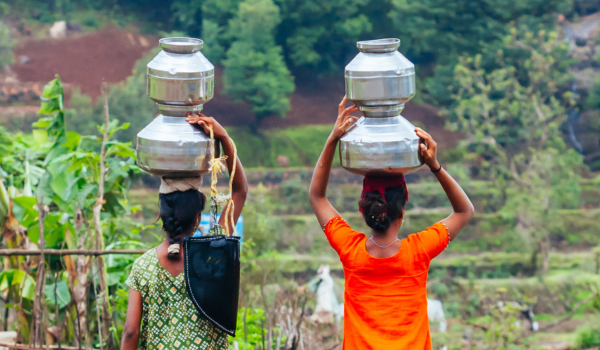Water, sanitation, and hygiene services are key to ensuring water security and global adaptation. There is no water security or adaptive capacity if populations have no access to safe, sufficient, and affordable water to meet essential needs for drinking, sanitation and hygiene, to safeguard health and well-being, and to fulfil basic human rights. To that end, GWP participated in an effort led by the Sanitation and Water for All Partnership (SWA) to provide a constructive Framework for incorporating and monitoring water metrics as an input to the Glasgow–Sharm el-Sheikh (GlaSS) work programme.
The Global Goal on Adaptation, under refinement this week and next at the Bonn Climate Change Conference (5-16 June 2023), will be formally adopted at COP28 at the end of this year. The GGA is expected to provide overarching guidance to countries on the most critical adaptation actions that should be prioritised – and financed. Clearly documenting the opportunity and contribution that water, sanitation and hygiene services offer is therefore a major step in solidifying the presence of water in global measurement of adaptation – and the WASH community rose to the occasion.
Mainstreaming climate-resilient water, sanitation and hygiene services into adaptation
Outlining key strategies for climate-resilient water, sanitation and hygiene services can be a great starting point and baseline within the water theme of the GGA Framework for enhancing efforts to mainstream adaptation in national priority areas. The Guideline, submitted to the UNFCCC by UNICEF on behalf of the SWA partnership, outlines four strategies that can be set to be achieved by a given year (for example, coinciding with the end of the second Global Stocktake in 2028 or the SDGs in 2030):
-
Reducing vulnerability in areas with high climate risk exposure and insufficient water and sanitation services.
-
Ensuring that progress towards the achievement of universal access to water, sanitation and hygiene contributes to climate adaptation.
-
Ensuring that existing water, sanitation and hygiene systems in areas highly exposed to climate risks embrace risk-based management and are retrofitted and upgraded.
-
Fostering water conservation, efficiency and reuse throughout existing water, sanitation and hygiene systems.
The Sixth workshop under the Glasgow–Sharm el-Sheikh work programme on the Global Goal on Adaptation, just concluded on June 5th in Bonn, focused extensively on target-setting. Submitting the Guideline well in advance of the June workshop was therefore essential for confirming water’s inclusion in the refinement of GGA targets.
“The WASH community has spent quite some time figuring out how best to engage in the climate action conversation and engage with stakeholders who do not have water at the center of their missions,” observed Lesley Pories, GWP’s Coordinator for the Global Water Leadership Programme. “Coming together to prepare a structured document that would provide clear guidelines for how to integrate WASH into adaptation priorities was an important step forward in positively contributing to the climate conversation.”
“It was also a valuable exercise to the WASH community,” reflected Pories, who also serves as Co-Chair for the SWA High-Level Political Dialogue Working Group. “Taking a step back and thinking about how to articulate the clear interconnections between WASH, water and climate adaptation for non-water audiences was an incredibly necessary activity that will have spillover benefits as we continue to engage in the conversation.”
GWP is pleased with the Guideline and the potential it holds to ensure water, sanitation and hygiene services, fundamental components of water security, are mainstreamed into the conversation and measurement of climate adaptation.

